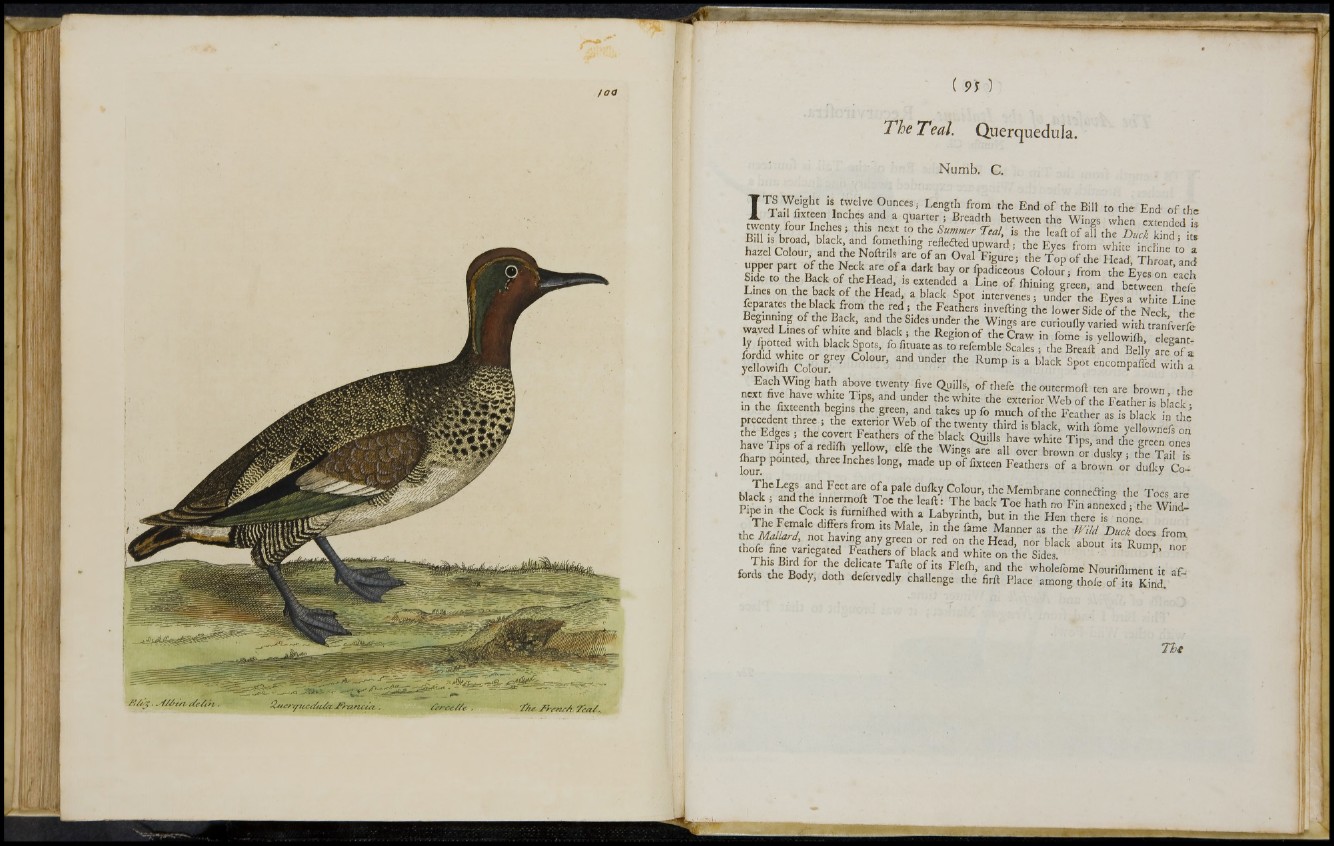
The Teal. Querquedula.
Numb. C.
is, tvrdve ° unces * L “ gtH from the End of the Bill to the End of the
Tail fatten Inches and a quarter; Breadth between the Wings when extended k
BUM^hmaH M t* thls ncxt t? the Summer Teal, is the lead of all the Duck kind • it*,
h fi p i blaJk> and fomething reflefledupward;; the Eyes from white incline to a
hazel Colour, and the Noftrils are of an Oval Figure ■ the Ton nf rh„ j
Sfidfei toX th,e tBacfk o ff etheS Hefad, is extended a Line of ihining green, and between thefe
^ îf0n the back of the Head a black Spot intervenes; under the Eyes a wldte î fn î
feparates the black from the red ; the Feathers inverting the lower Side o f the Neck the
Beginning of the Back, and the Sides under the Wings are curioufly varied with tran’fverfe
H r r Reglonof tbcCraw in fame is yellowifh, eleganti
Ü S T v black Spots, fofituate as to referable Scales; the Breaft and Belly are of a
I W P “ * ” »i “ h R™ P % * M « c o oe p a i r K Î 1
Each Wing hath above twenty five Quills, of thefe the outermoft ten are brown X I
h T r L f jlave,wbltt: T ’ and under tbe white the exterior Web of the Feather is black-
m the fifteenth begins the green, and takes up fo much of the Feather as is black in thé
P/®Cp f nt J the exterior Web of the twenty third is black, with fome yellownefs on
the Edges ; the covert Feathers of the b ack Quills have white Tin» »„a
h .v . T ip o f , «difl, * tIfc ^
jharp pointed, three Inches long, made up of fixteen Feathers of a brown or duiky Co-
The Legs and Feet are of a pale duiky Colour, the Membrane connefting the Toes are
black ; and the innermoft Toe the leaft : The back Toe hath no Fin annefed ; the Wind!
The Femahd-ff T T/Î i ? f 'abyrinth> but in the Hen there is none.
t h w / l T differs from its Male, m the fame Manner as the -Wild Buck does from
f ’ n0t haJV1i-g a?y g ree" or ^d on the Head, nor black about its Rump
vaflegatcd Feathers o f black and white on the Side3
f n l f h R d Î eudf ? atC T afte of its Fleih, and the wholefome NourHhment it aR
fords the Body, doth defervedly challenge the firft Place among thofe